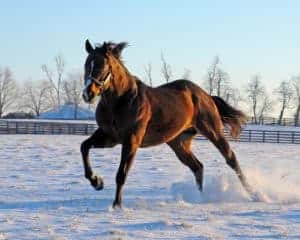Kinematics of Riders’ Hands and Horses’ Mouths Studied
- Topics: Article
The way we sit a horse and the way we use our reins—intentionally or not—could be giving signals to horses that we weren’t meaning to give.
Recent study results show that horses react to our “rider kinematics”—the way we move—in patterns not previously identified, said Marie Eisersiö, MSc, of the Swedish University of Agricultural Sciences Faculty of Veterinary Medicine and Animal Husbandry.
The kinematic variable of the relationship between the rider's hand and the horse's mouth is "of importance as it yields some information about the rider's ability to follow the movement of the horse with the hand,” Eisersiö said. It's very important, from a horse welfare standpoint, that riders continuously work on improving how they use the hand, she added.
Eisersiö and her fellow researchers studied seven dressage horses ridden by their regular riders at the sitting trot on a treadmill. The researchers focused on the horses’ head, ears, and mouth movements and compared these findings to the riders’ use of the reins and the phase of the trot. They also measured rein tension in three horses
Create a free account with TheHorse.com to view this content.
TheHorse.com is home to thousands of free articles about horse health care. In order to access some of our exclusive free content, you must be signed into TheHorse.com.
Start your free account today!
Already have an account?
and continue reading.

Related Articles
Stay on top of the most recent Horse Health news with

















